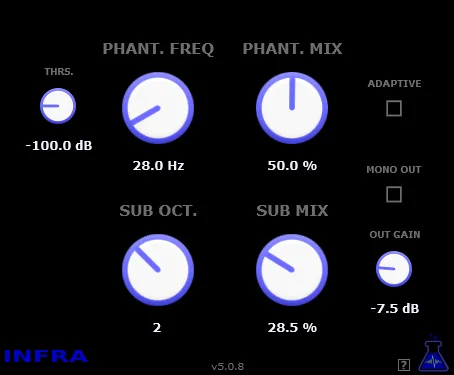U-he Protoverb – An Experimental Look at Reverb
Hello, music enthusiasts and sound experimenters! If you’re looking for something truly unique for your plugin arsenal, allow me to introduce you to U-he Protoverb. This isn’t just another reverb; it’s a bold research project aimed at recreating the natural acoustics of spaces in a completely new way.
What sets Protoverb apart from classic reverbs?
Traditional algorithmic reverbs often try to avoid unwanted resonances or focus on modeling early and late reflections from walls. Protoverb goes in the diametrically opposite direction. Its main idea is to imitate the body of air inside a room, accumulating as many room resonances as possible. This allows for an extremely natural sound, which is rarely found in conventional digital reverbs.
Key Feature: Modeling Air Resonances
Instead of avoiding resonances, Protoverb builds them by imitating how the air in a room reacts to sound. This approach doesn’t require modulation or additional signal coloration to sound “alive.”
Protoverb’s sound characteristics
The result of this unique approach is a reverb with several interesting and musical characteristics:
- Reinforcement of long frequencies: Long sounds or notes resonate louder, creating a feeling as if the air in the room is gradually “excited.”
- Clarity of instruments: Even in a dense mix, different instruments retain their individuality and do not merge into a diffuse “mud.”
- “Ghost echo” of melodies: When playing short melodies or phrases, the room may seem to repeat them with a quiet “ghostly” echo. This effect can often be heard in large natural acoustic spaces, such as churches or concert halls.
Technical implementation and concept
Protoverb achieves its unique sound thanks to the use of a large number of parallel, serial, and network delay lines. As with many delay-based reverbs, finding the “right” sound is a matter of trial and error, and possibly a large amount of luck with random values.
A community-driven data collection project
This is where another unique side of Protoverb lies. U-he developed it as a “data collection” concept. Instead of spending years looking for perfect algorithms on their own, they invite the music community to participate in this process.
The plugin’s interface contains two text fields that define its behavior:
- The first field describes the structure of the delay network, spatial positioning strategies, the distribution of signal sampling points, and methods for determining the delay lengths.
- The second field is a “seed” for the pseudorandom number generator, which is used to set various parameters, such as the average delay length, the selection of prime numbers, etc.
You can edit these fields manually (by double-clicking) or randomize them independently using the corresponding buttons. If you are lucky enough to find a setting that sounds incredible, you can save this text string and share it! U-he encourages users to send their best findings, and in the future plans to celebrate the most successful ones.
Conclusion
U-he Protoverb is more than just a plugin; it’s an invitation to creative experimentation and a joint exploration of acoustic possibilities. It offers a fresh look at reverb, recreating the nuances of real physical spaces. Download Protoverb for free, immerse yourself in the world of resonances and delays, and perhaps you will discover new horizons of sound!



